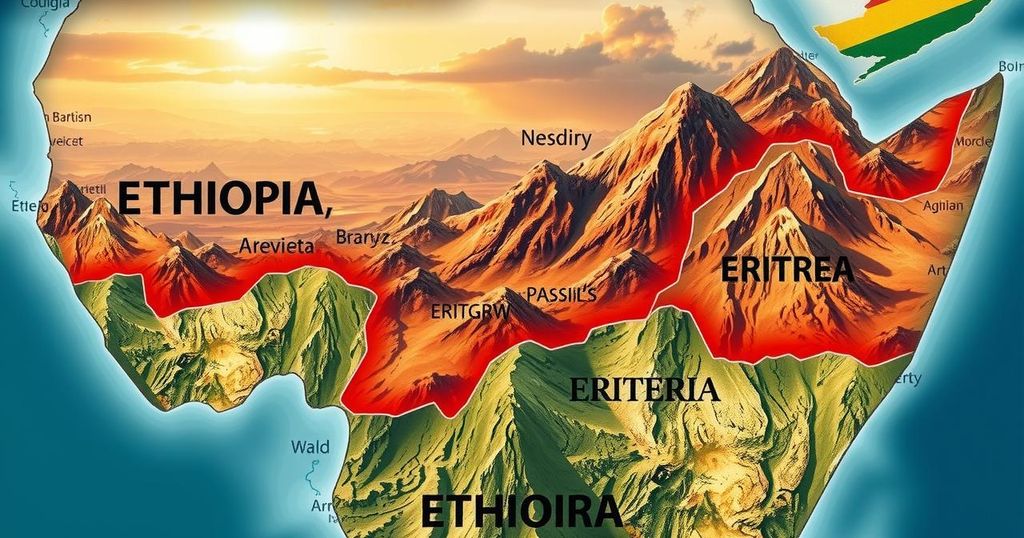Ethiopia and Eritrea are nearing potential conflict, jeopardizing peace efforts made since 2018. Tensions have escalated due to instability in Tigray, a historical backdrop of conflict, and military buildup on both sides, with no official comments from either government as of yet.
Recent warnings from officials in northern Ethiopia and regional experts indicate that Ethiopia and Eritrea are on the brink of potential conflict. This situation poses a significant threat to the historic rapprochement that led to Ethiopian Prime Minister Abiy Ahmed winning the Nobel Peace Prize in 2019, and it may also risk engendering another humanitarian disaster in the already troubled Horn of Africa region.
The fears of renewed war arise from escalating instability in the Tigray region of northern Ethiopia, a site of a devastating civil war from 2020 to 2022, which resulted in extensive loss of life. Recently, Eritrean forces had intervened by crossing the border to aid the federal government against Tigray rebels. However, the peace agreement established in November 2022 excluded Eritrea, causing tension between the nations as a schism emerged within Tigray itself.
Internal conflict is intensifying, evidenced by a dissident faction in Tigray that recently captured the town of Adigrat. This faction alleges betrayal by the interim administration regarding Tigrayan interests, which in turn claims the dissidents are colluding with Eritrea. Such accusations have heightened tensions, as both factions remain firm in their accusations against one another.
Diplomatic sources highlight increased military actions, with Eritrea mobilizing nationwide military forces, while Ethiopia positions troops near the Eritrean border. As of now, there has been no official commentary from either government regarding these developments, which may escalate into armed conflict.
Historically, relations between Ethiopia and Eritrea have been tumultuous. Eritrea was annexed by Ethiopia in 1962, leading to a prolonged independence struggle. Following Eritrea’s independence in 1993, relations were initially amicable but soured critically after the border conflict from 1998-2000. The normalization of relations began in 2018 but deteriorated again towards the end of the Tigray war due to Ethiopia’s peace agreement with the TPLF, which excluded Eritrea.
Despite prior commitments for withdrawal of Eritrean troops from Ethiopian territory, some remnants of these forces remain present. Furthermore, the Eritrean leadership is concerned about statements from Ethiopian officials regarding access to maritime routes, which they perceive as threats. Recent events, including the suspension of Ethiopian Airlines flights to Eritrea following financial disputes, have exacerbated the ongoing strain between the two nations.
In conclusion, the potential for renewed conflict between Ethiopia and Eritrea is largely driven by historical grievances, recent military mobilizations, and the fallout from the Tigray conflict. Current tensions reflect the fragility of their diplomatic relations, which were once on a promising path towards reconciliation. As both nations navigate their disputes, the implications of escalation could further complicate stability in the Horn of Africa, impacting humanitarian situations and regional security.
Original Source: ntvkenya.co.ke






